LensRentals has loaned me a Hasselblad XCD 55mm f/2.5 V lens for testing.
The Hasselblad XCD 55V is a 55mm f/2.5 lens for the X1D and X2D (X-mount) cameras. It is one of the V-series X-mount lenses. The line currently consists of 25mm, 38mm, 55mm, and 90mm lenses. All have f/2.5 as their widest aperture. All have high-speed leaf shutters, which are great for outdoor flash synchronization, but can create some artifacts under some conditions. All the lenses feature switching between automatic and manual focusing by sliding the focusing ring forward and backward. When the focusing ring is in the manual focus position, a distance scale is revealed, with depth of field markings that are of great utility when zone focusing. When the ring is in the manual focus position, the lens gives a good simulation of a mechanical helicoid. This is designed so artfully that it fooled me at first; the lens is focus-by-wire even when manually focusing.
Sharpness
The 55V, like the 38V and 90V, both of which I’ve tested, is quite a sharp lens. It is sharp enough to cause aliasing with the X2D even wide open. The sharpest aperture in the center of the image (what lens designers call on-axis) is f/4.
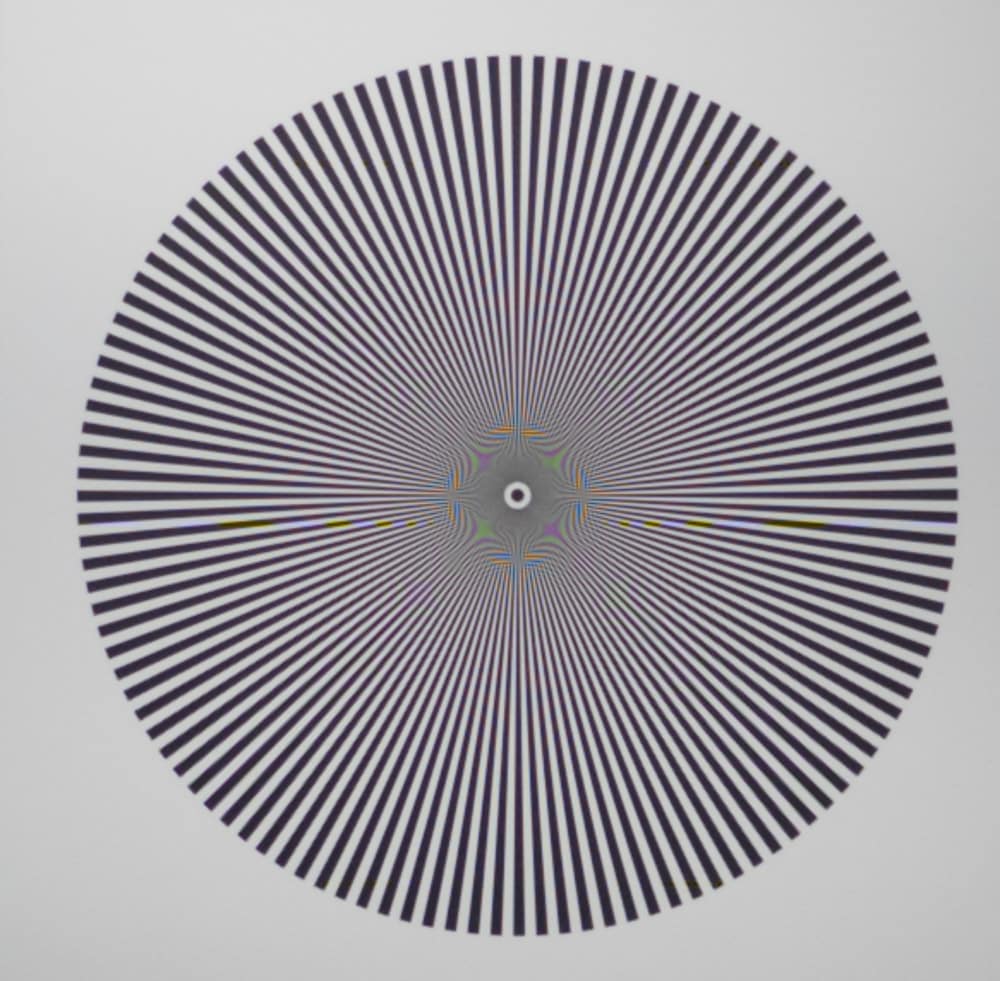

If you look at the corners, the sharpest aperture is about f/5.6.
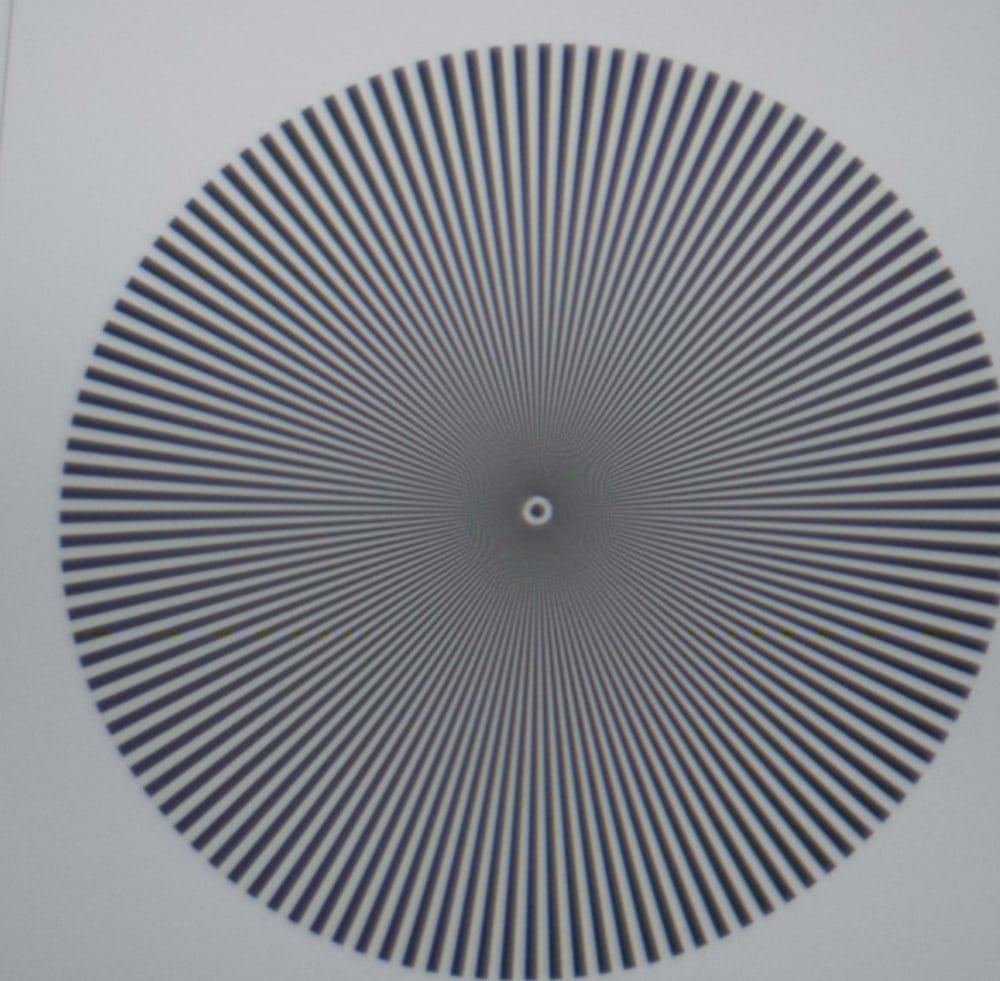
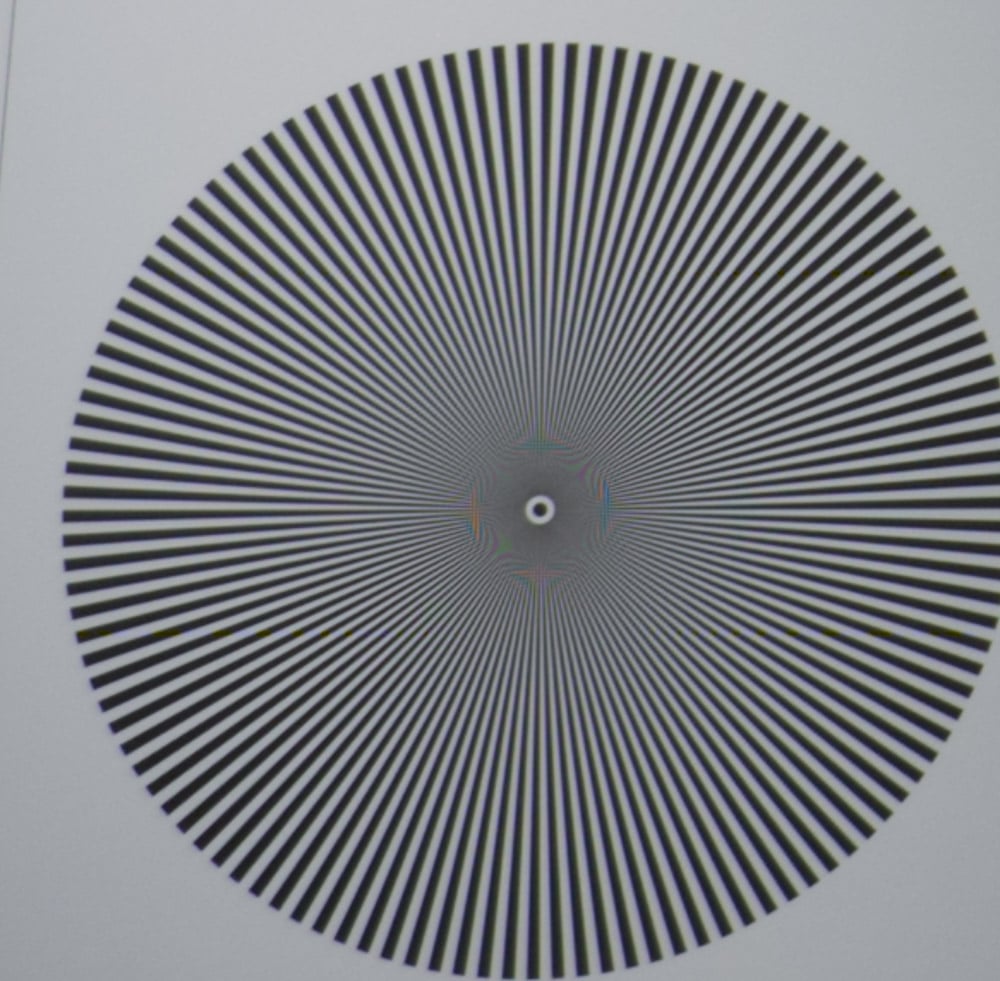
Diffraction impairs the image sharpness at f/8, and by f/11, diffraction introduces enough image blur that aliasing is effectively eliminated.
Aberrations
Lateral chromatic aberration (LaCA) is well controlled. So is longitudinal chromatic aberration (LoCA). Out of focus areas show some artifacts at high mechanical shutter speeds (more on that later). There is little focus shift with aperture setting, which indicates that residual spherical aberration is low.
Illumination falloff
The V series lens designers prioritized compact dimensions. To make the lenses as small as they are, the design engineers had to sacrifice evenness of illumination. There is quite a bit of falloff from the center of the frame to the edges and corners when the lenses are open wide. This can be automatically corrected in Phocus, Lightroom, or Adobe Camera Raw, but the penalty is reduced dynamic range in the periphery of the images.

Wide open and focused to infinity, the corners receive 44% of the illumination of the center of the image (using a 200×200 pixel sample). That means that there’s more than one stop illumination loss in the corners. That means that the corner engineering dynamic range (EDR) is a bit more than a stop less than the EDR on axis. At f/8, there is still quite a bit of falloff. There, the corners receive 58% of the center illumination, which is about 0.8 stops down from the center.
Bokeh
There are two important aspects to bokeh. It seems most people, when they hear the word, think immediately of the look of parts of the scene that are far out of focus. There’s another aspect of bokeh: the characteristics of the lens in rendering subjects that are nearly in focus. The way the lens handles the change from sharply in focus to definitely out of focus is important in the look that the camera and lens give to three-dimensional subjects closer than landscape distances. I have developed some quantitative methods and presentations for looking at the transfocal bokeh, but they seem to confuse more people than they enlighten, so I’ll show you some pictures. But first, let’s look at the far out of focus bokeh. A good way to do this is to open up the lens all the way, focus it to the minimum focusing distance (MFD), and aim the camera at a distant, small, light source. A perfect lens will show a featureless, round circle of illumination.
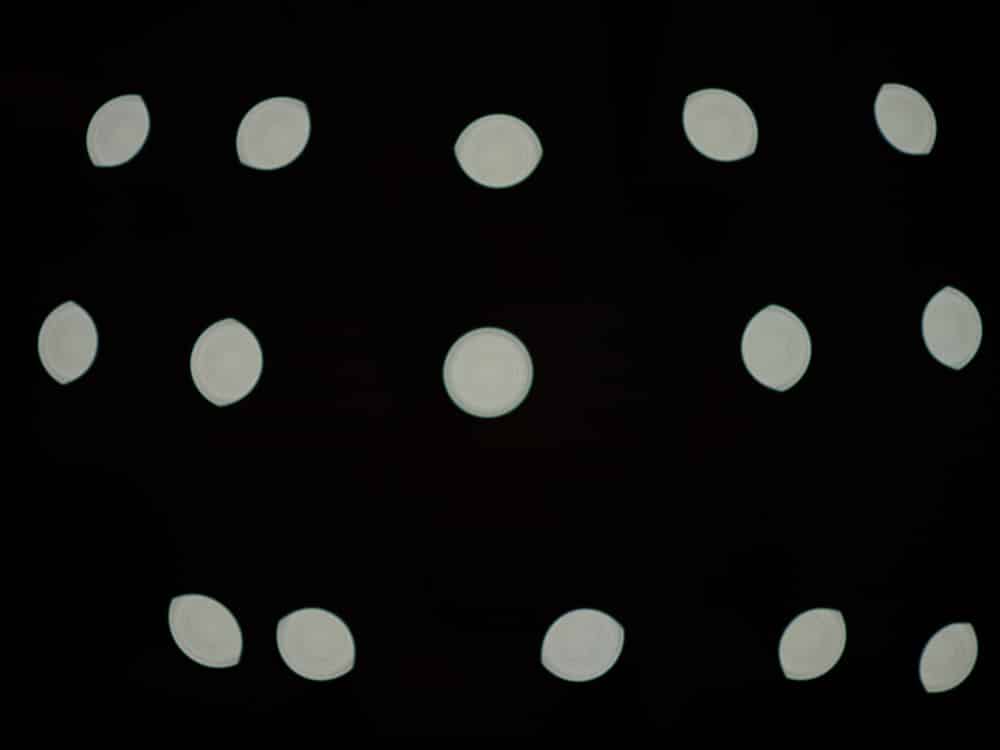
In the center of the frame, the 55V comes pretty close to that. There is a bit of onion ring bokeh. When the light source is more toward the periphery of the frame, parts of that circle are occluded by internal parts of the lens. This is called mechanical vignetting. There is quirk to the far-out-of-focus bokeh at high mechanical shutter speeds; I’ll cover that later.
Here are some images that you can examine to get an idea of the transfocal bokeh; it looks fine to me.
Distortion
Lightroom’s distortion correction yields an image that is close to the classic rectilinear projection. I don’t see any issues at all in using this lens for architecture. Here’s a test shot with Lightroom’s lens corrections on, with a blue straight line indicating what perfection would look like.
The 55V comes very close to the straight line.
Autofocus performance
The X2D does not support continuous autofocus, so I couldn’t test that. AF-S works well for static, high-contrast subjects in bright light. With lower contrast subjects, the autofocus frequently hunts. When compared to the GFX 100 II, the X2D autofocus is much more hit and miss. This is not unique to the 55V; I have noticed the same thing with the 38V and 90V. It is not unique to the X2D; I’ve seen the same behavior with the 907X 100C. Most, but not all, of the time, focus is quite accurate once focus confirmation has been received.
Handling and Haptics
One of my favorite things about the XCD V-series lenses is the way the focus ring works. The usual mode of operation is to set the camera body to autofocus. If you’ve done that, sliding the ring away from the camera body puts the system in manual focus mode, and uncovers a distance scale that works in conjunction with the old-fashioned (in a good way) depth of field markings. These are calibrated for a 30ish micrometer circle of confusion, which is too coarse for many uses these days, but it’s easy to read the marking for a lens aperture two stops wider than you’re actually using and cutting that circle of confusion in half. Use the marking for a lens opening four stops wider than you’re using and you’ve got a circle of confusion of about 8 micrometers. Like all the V-series lenses, the 55V is compact and light weight considering its coverage, speed, focal length, and the fact that it contains a leaf shutter mechanism.
I am not a fan of the metal Hasselblad lens caps. I understand that they’re constructed the way they are so you can remove the lens cap with the hood attached, but I find the curved metal surface that you have to grip to release the lock slippery, and I worry about scraping the lens cap against the front element of the lens, especially when the camera is on a tripod and I’m reaching around from behind the camera. I know this is a first-world problem, but I really don’t like metal lens caps and hoods, mostly because they are easier to damage if you drop them than the plastic versions. Fortunately, there is no rule that you have to use Hasselblad lens caps on Hasselblad lenses.
All the XCD V-series lenses so far accept 72mm filters and accessories. I think that kind of standardization is a good thing, and it reminds me of the old days when most Nikkor F-mount lenses used 52mm filters.
The XCD 55V minimum focus distance is 0.45 meters, which is close enough for most uses.
Conclusions
The XCD 55V is a fine lens. It is sharp, light, and compact. Its leaf shutter works as well as you’d expect up to 1/1000 second. It has a fair amount of illumination falloff which can be corrected automatically at some cost to corner dynamic range. At $3700 in the US, it is more expensive than Fujifilm alternatives.
A Quirk
The 55V exhibits some strange behavior. I don’t think this quirk is disqualifying for most applications, but the careful photographer should be aware of them.
The XCD 55V achieves 1/2000 second flash synch speed, which is fast for a leaf shutter. The putative mechanical shutter on the XCD lenses is not fully mechanical. The exposure is initiated electronically, with a very fast rolling chip reset while the mechanical shutter is open, and the closing of the mechanical shutter ends the exposure. It’s sort of like EFCS, although the details are different, and, like EFCS, the bokeh at high shutter speeds is affected. The bokeh effects of EFCS are usually subtle, but this effect is not. It is much worse on the 90V with its 1/4000 second mechanical shutter than on the 55V, which has a 1/2000 second mechanical shutter.
The reset of the sensor which initiates the exposure takes place at the image plane, while the closing of the leaf shutter, which ends the exposure, occurs inside the lens body. This causes the bokeh of far out of focus objects to be distorted.
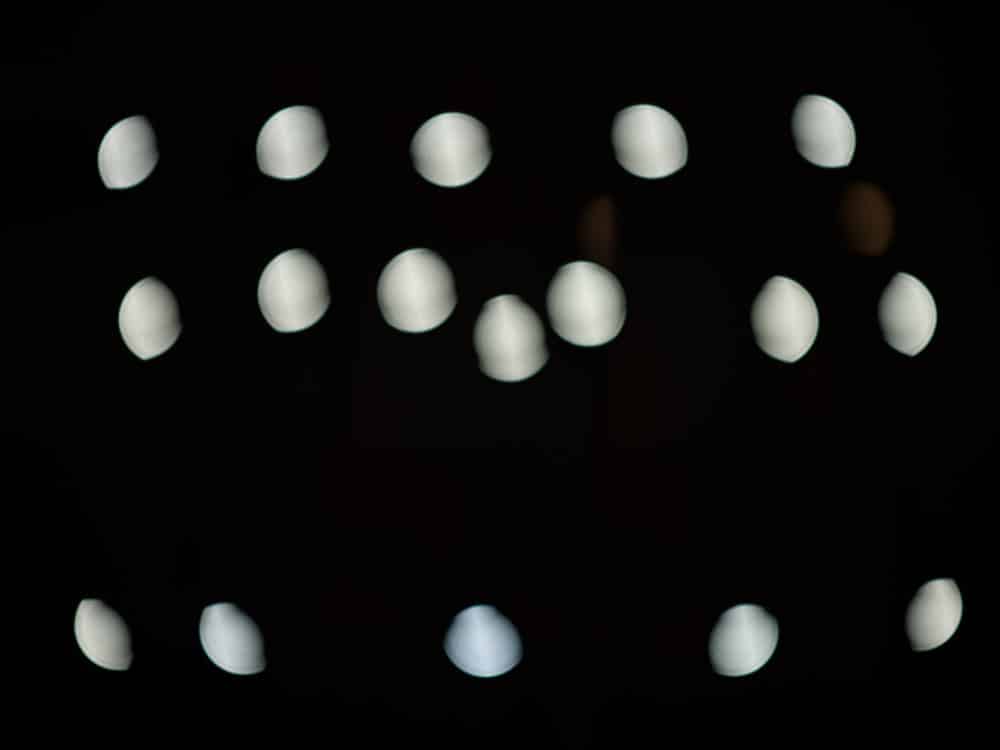
The workaround is to avoid mechanical shutter speeds above 1/1000 second, or to use the electronic shutter. Flash synch at high shutter speeds is impossible with the electronic shutter.


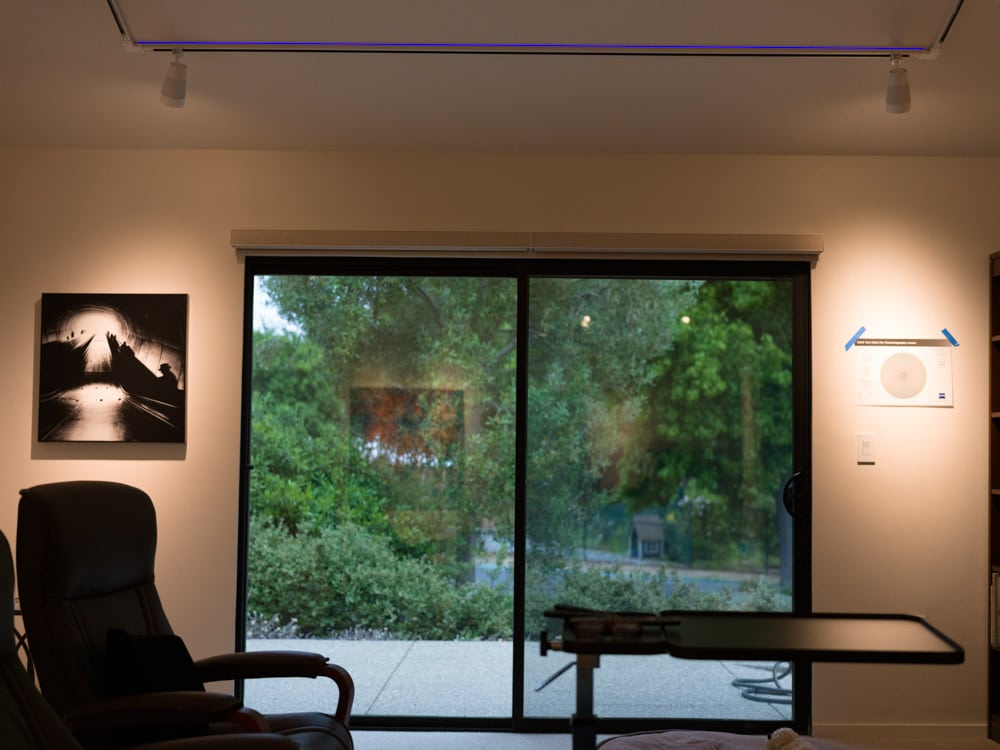
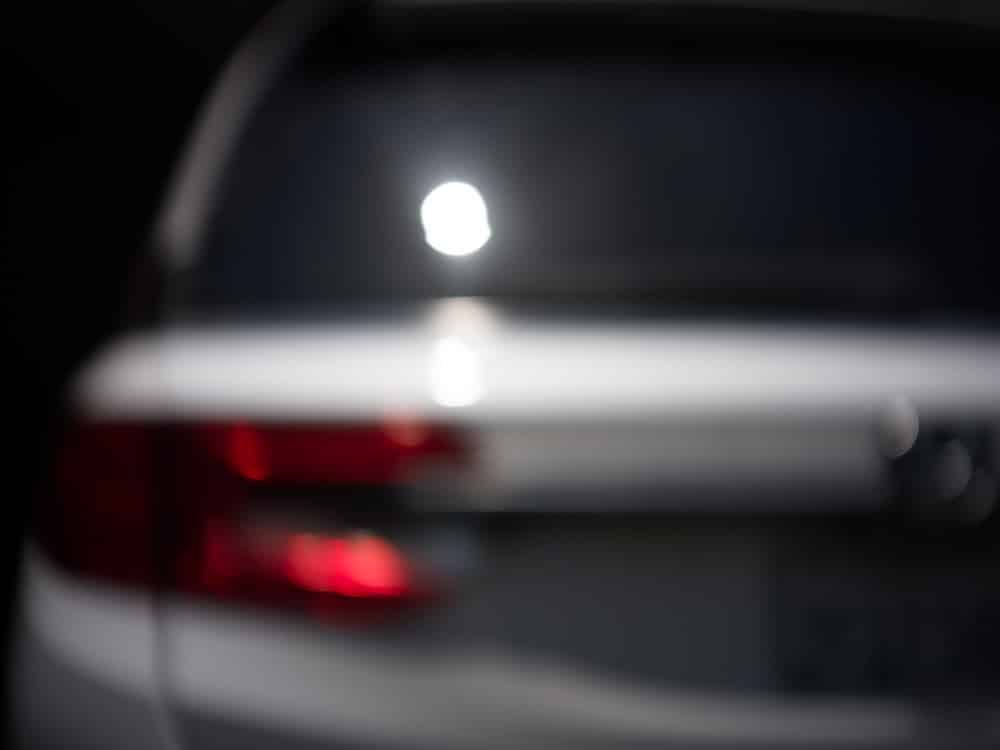
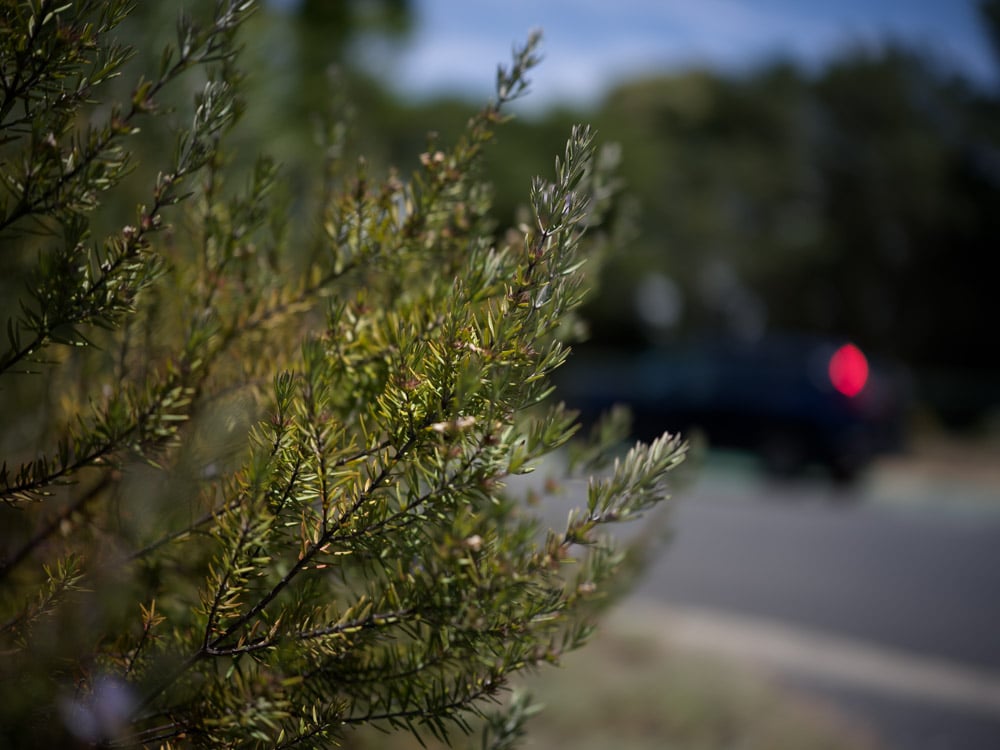
Marcus Adams says
Hi Jim
Thanks for your exhaustive work on these things!
Will you be producing a similar summary and conclusion for the 38V?
JimK says
That’s a good idea!